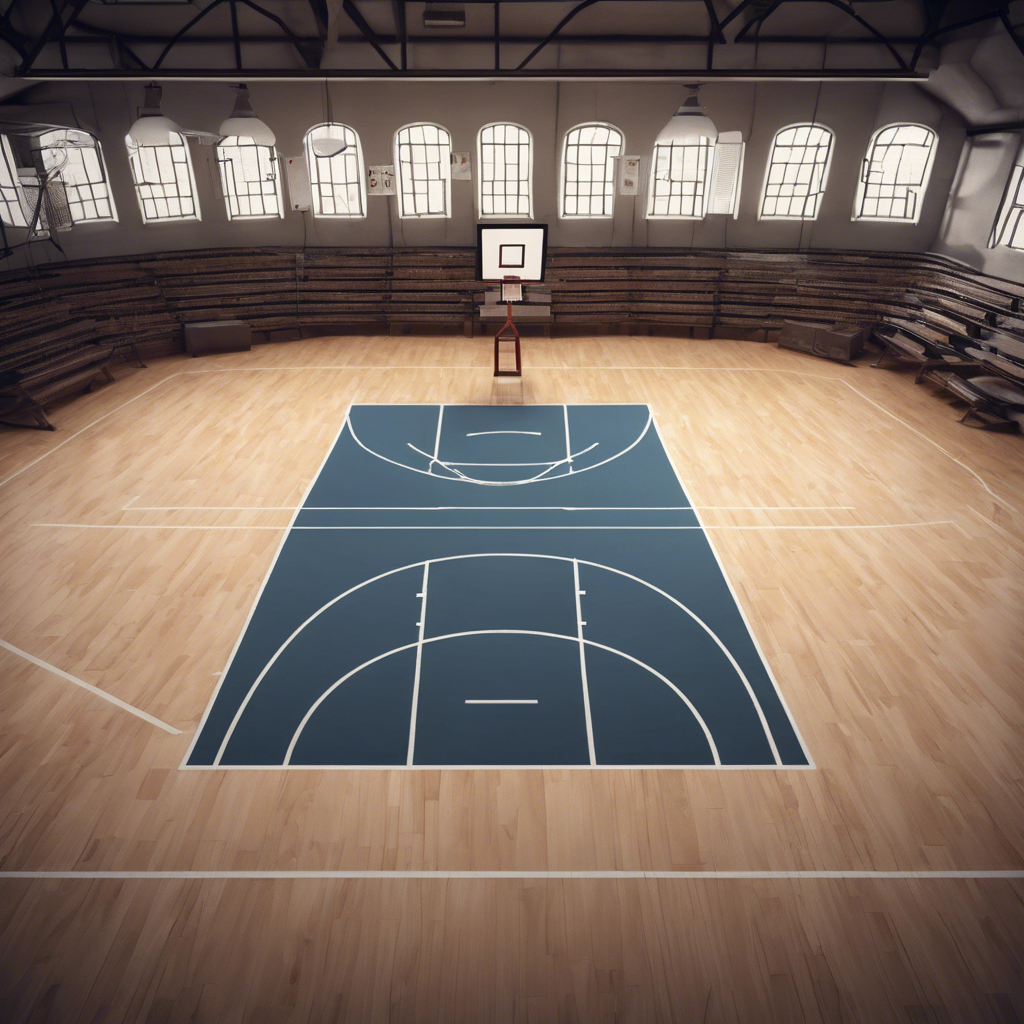Basketball, a game loved by millions around the world, has seen numerous changes over the years. One of the most iconic elements of the game is the basketball court itself, a place where legends are made and memories are etched in history. Let's take a closer look at the evolution of the modern basketball court through a listicle format that highlights key milestones in its development.

Step 1: The Birth of the Basketball Court

When Dr. James Naismith conceptualized the first basketball court in 1891, he revolutionized the way sports were played. The initial design reflected a humble beginning, with a basic gymnasium setting as the backdrop for the game. Instead of the modern backboards and hoops we are accustomed to, peach baskets were ingeniously repurposed as goals, adding a rustic charm to the court.
Unlike the meticulously measured and marked courts we have today, the original basketball court lacked standardized dimensions and boundaries. This lack of uniformity added an element of unpredictability and adaptability to the game, challenging players to rely more on their instincts and skills rather than predetermined court lines.
The simplicity of the first basketball court highlights the essence of the sport's origins and the innovative spirit of its creator. From these humble beginnings emerged a game that has evolved into a global phenomenon, with state-of-the-art courts showcasing cutting-edge technology and design. However, the legacy of Dr. Naismith's original court remains a testament to the purity and raw excitement of basketball in its infancy.
Step 2: Introduction of the Three-Point Line

In 1961, the American Basketball League made a significant and groundbreaking decision by introducing the three-point line to the sport of basketball. This innovation marked a pivotal moment in the history of the game, as it fundamentally changed the dynamics of scoring and strategy on the court. The introduction of the three-point line allowed players to showcase their shooting skills from a distance that was previously not rewarded as significantly in terms of points. The implementation of the three-point line brought a new dimension to basketball, encouraging players to develop their long-range shooting abilities and adding an element of unpredictability to the game. Teams now had to factor in the strategic implications of the three-point shot, leading to more dynamic offensive plays and defensive strategies. The three-point line quickly became a symbol of excitement and skill in basketball, with fans eagerly anticipating the sight of players attempting shots from beyond the arc. It created moments of high drama and tension, as every successful three-point shot had the potential to swing the momentum of a game in an instant. Over the years, the three-point line has become a fundamental aspect of basketball at all levels, from local recreational leagues to professional competitions. It has produced legendary shooters who have mastered the art of long-range shooting, captivating audiences with their precision and accuracy from downtown. In conclusion, the introduction of the three-point line in 1961 by the American Basketball League was a game-changing innovation that not only revolutionized scoring in basketball but also added a new layer of excitement and skill to the sport. Its impact continues to be felt today, shaping the way the game is played and celebrated by fans around the world.
Step 3: The Era of Parquet Floors

Throughout the 1960s and 1970s, the NBA witnessed a significant shift in the design and functionality of its arenas, particularly with the introduction of the iconic parquet floors. These intricate wooden patterns, meticulously crafted and laid out on the courts, quickly became synonymous with the league's venues. Beyond their visual appeal, these parquet floors served a crucial purpose in enhancing the gameplay experience for both athletes and fans alike.
Players of that era developed a special affinity for the parquet floors due to their exceptional grip and bounce properties. The unique surface texture not only added a layer of challenge to the game but also allowed for more precise movements and ball control. As a result, the parquet floors became more than just a design element; they became an integral part of the NBA experience, influencing the style of play and strategies employed by teams.
Moreover, the distinctive look of the parquet floors contributed to the overall atmosphere of NBA arenas, creating a sense of tradition and nostalgia. Fans grew accustomed to the sight of these intricate wooden patterns, forming a deep connection with the history and heritage of the sport. The creaking sound of sneakers against the polished wood became a familiar soundtrack of basketball games, further cementing the association between the parquet floors and the NBA.
In essence, the introduction of parquet floors during the 1960s and 1970s marked a pivotal moment in the evolution of NBA arenas. These unique surfaces not only elevated the visual appeal of the courts but also played a significant role in shaping the gameplay dynamics and fostering a sense of tradition within the basketball community.
Step 4: From Hardwood to Multi-Purpose Surfaces
As the demand for multi-functional spaces grew, basketball courts started to adapt to accommodate various events and sports activities. The shift from traditional hardwood to synthetic surfaces allowed for greater versatility without compromising on performance.
Step 5: Technology and Innovation in Court Design
With advancements in technology, basketball courts have evolved to cater to the needs of modern athletes. Features like shock-absorbing surfaces, customizable logos, and LED lighting have become standard in professional arenas, enhancing both player experience and audience engagement.
In conclusion, the basketball court has come a long way from its humble beginnings as a makeshift playing area with no defined boundaries. The evolution of the modern basketball court not only reflects the changes in the game but also showcases the continuous drive for innovation and improvement in sports infrastructure.
Comments